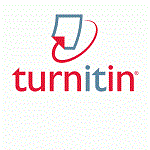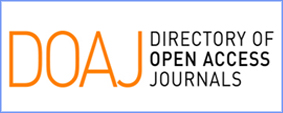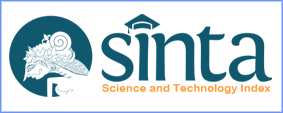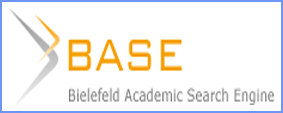Pengembangan Model Blended Learning Berbasis Proyek Untuk Menunjang Kreatifitas Mahasiswa Merancang Pembelajaran Matematika Sekolah Dasar
Abstract
Keywords
Full Text:
PDFReferences
Boelens, H., & Heij, W. La. (2017). The development of semantic blocking in children. British Journal of Developmental Psychology, 35(2), 310–315.
Dyer, J., Gregersen, H., & Christensen, C. M. (2011). Innovators DNA: Mastering the Five Skills of Disruptive Innovators. Harvard Bussiness Review.
Ergül, N. R., & Kargın, E. K. (2014). The Effect of Project based Learning on Students’ Science Success. Procedia - Social and Behavioral Sciences, 136, 537–541. https://doi.org/10.1016/j.sbspro.2014.05.371
Han, S., Capraro, R., & Capraro, M. M. (2015). How Science, Technology, Engineering, And Mathematics (STEM) Project-Based Learning (PBL) Affects High, Middle, And Low Achievers Differently: The Impact Of Student Factors On Achievement. International Journal of Science and Mathematics Education, 13(5), 1089–1113.
Henriksen, D. (2016). The seven transdisciplinary habits of mind of creative teachers: An exploratory study of award winning teachers. Thinking Skills and Creativity, 22(-), 212–232.
Hsieh, S.-W., Jang, Y.-R., Hwang, G.-J., & Chen, N.-S. (2011). Effects of teaching and learning styles on students’ reflection levels for ubiquitous learning. Computers & Education, 57(-), 1194–1201.
Indonesia, G. of. Undang-Undang Nomor 20 Tahun 2003 Tentang Sistem Pendidikan Nasional, Pub. L. No. 20 (2003). Indonesia.
Khairullina, N., Bakhtizin, R., Gaisina, L., Kosintseva, T., & Belonozhko, L. (2016). Development of creative activity of students in the system of the organizational culture of the modern university. International Journal of Environmental and Science Education, 11(8), 2171–2184. https://doi.org/10.12973/ijese.2016.588a
Krinitsyna, A. V., Nikitin, O. D., & Boyakova, E. V. (2016). Characteristics of the creative development technologies applying during the work with students. International Journal of Environmental and Science Education, 11(18), 11709–11720.
Liu, P. (2016). Technology Integration in Elementary Classrooms : Teaching Practices of Student Teachers. Australian Journal of Teacher Education, 41(3), 87–104. https://doi.org/10.14221/ajte.2016v41n3.6
Mann, E. L. (2005). Mathematical creativity and school mathematics: Indicators of mathematical creativity in middle school students. Doctoral Dissertations, AAI3205573. Retrieved from https://opencommons.uconn.edu/dissertations/AAI3205573
Mishra, P., & Koehler, M. (2009). Too cool for school? No way! Learning & Leading with Technology, 36(7), 14–18.
Morais, M. F., & Azevedo, I. (2011). What is a creative teacher and what is a creative pupil? Perceptions of teachers. Procedia - Social and Behavioral Sciences, 12, 330–339. https://doi.org/10.1016/j.sbspro.2011.02.042
Richardson, C., & Mishra, P. (2018). Learning environments that support student creativity: Developing the SCALE. Thinking Skills and Creativity, 27(August 2017), 45–54. https://doi.org/10.1016/j.tsc.2017.11.004
Smaldino, S. E., Lowther, D. L., & Russell, J. D. (2012). Intructional Technology and Media for Learning. New Jersey: Pearson Merril Prentice Hall Inc.
Soh, K. (2017). Fostering student creativity through teacher behaviors. Thinking Skills and Creativity, 23, 58–66.
Sternberg, R. J., & Sternberg, R. J. (2006). The Nature of Creativity The Nature of Creativity. Creativity Research Journal, 18(1), 87–98. https://doi.org/10.1207/s15326934crj1801
Tsai, C.-Y., Horng, J.-S., Liu, C.-H., Hu, D.-C., & Chung, Y.-C. (2015). Awakening student creativity: Empirical evidence in a learning environment context. Journal of Hospitality, Leisure, Sport & Tourism Education, 17, 28–38.
Umek, L., Aristovnik, A., Tomaževič, N., & Keržič, D. (2015). Analysis of Selected Aspects of Students’ Performance and Satisfaction in a Moodle-Based E-Learning System Environment. EURASIA Journal of Mathematics, Science & Technology Education, 11(6), 1495–1505. https://doi.org/10.12973/eurasia.2015.1408a
Vale, I., & Barbosa, A. (2015). Mathematics Creativity in Elementary Teacher Training. Journal of the European Teacher Education Network, 10, 101–109.
Widiana, I. W., & Jampel, I. N. (2016). Improving Students’ Creative Thinking and Achievement through The Implementation of Multiple Intelligence Approach with Mind Mapping. International Journal of Evaluation and Research in Education (IJERE), 5(3), 246–254.
Zainudin, M. (2014). Efektivitas Pembelajaran Berbasis Projek ( PBP ) terhadap Kreativitas Mahasiswa pada Matakuliah Metodologi Penelitian. Jurnal Ilmiah Pendidikan Matematika, 2(2), 1–7. Retrieved from http://ikippgrimadiun.ac.id/ejournal/id/node/917
Zouganeli, E., Tyssø, V., Feng, B., Arnesen, K., & Kapetanovic, N. (2014). Project-based learning in programming classes - The effect of open project scope on student motivation and learning outcome. In IFAC Proceedings Volumes (IFAC-PapersOnline) (Vol. 19, pp. 12232–12236). IFAC. https://doi.org/10.3182/20140824-6-ZA-1003.02412
Article Metrics
Abstract has been read : 4914 timesPDF file viewed/downloaded: 0 times
DOI: http://doi.org/10.25273/jipm.v6i2.1766
Refbacks
- There are currently no refbacks.
Copyright (c) 2018 JIPM (Jurnal Ilmiah Pendidikan Matematika)

This work is licensed under a Creative Commons Attribution-ShareAlike 4.0 International License.
View JIPM Stats
JIPM indexed by:
Copyright of JIPM (Jurnal Ilmiah Pendidikan Matematika) ISSN 2502-1745 (Online) and ISSN 2301-7929 (Print)













